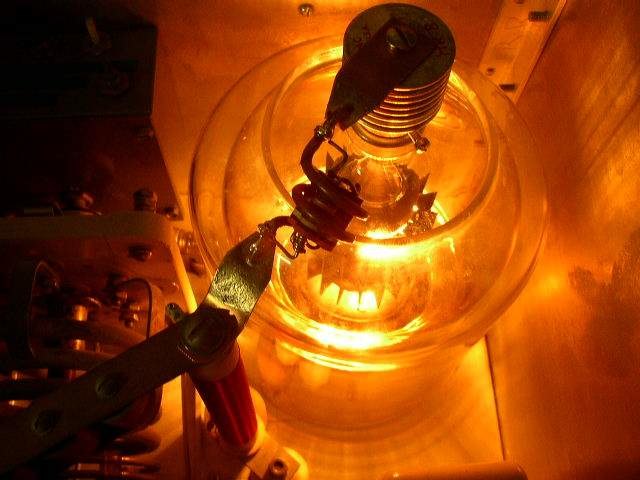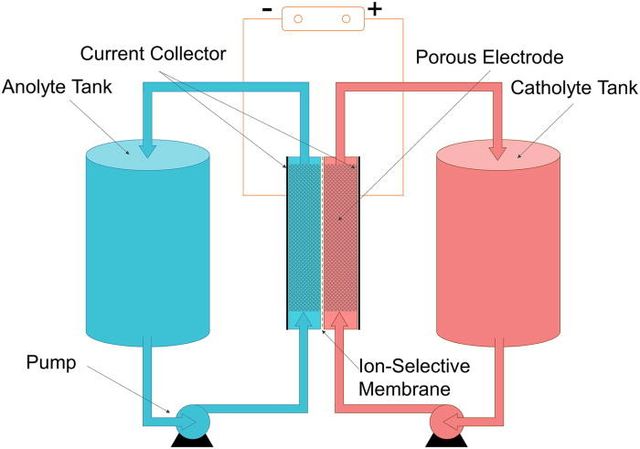A cathode is the electrode from which a conventional current leaves a polarized electrical device. This definition can be recalled by using the mnemonic CCD for Cathode Current Departs. A conventional current describes the direction in which positive charges move. Electrons have a negative electrical charge, so the movement of electrons is opposite to that of the conventional current flow. Consequently, the mnemonic cathode current departs also means that electrons flow into the device's cathode from the external circuit. For example, the end of a household battery marked with a + (plus) is the cathode.
Glow from the directly heated cathode of a 1 kW power tetrode tube in a radio transmitter. The cathode filament is not directly visible
Two indirectly-heated cathodes (orange heater strip) in ECC83 dual triode tube
Cold cathode (lefthand electrode) in neon lamp
An electrode is an electrical conductor used to make contact with a nonmetallic part of a circuit. Electrodes are essential parts of batteries that can consist of a variety of materials depending on the type of battery.
Electrodes used in shielded metal arc welding
Various disposable batteries: two 9-volt, two "AAA", two "AA", and one each of "C", "D", a cordless phone battery, a camcorder battery, a 2-meter handheld ham radio battery, and a button battery.
Rechargeable Batteries
A typical flow battery consists of two tanks of liquids which are pumped past a membrane held between two electrodes.







